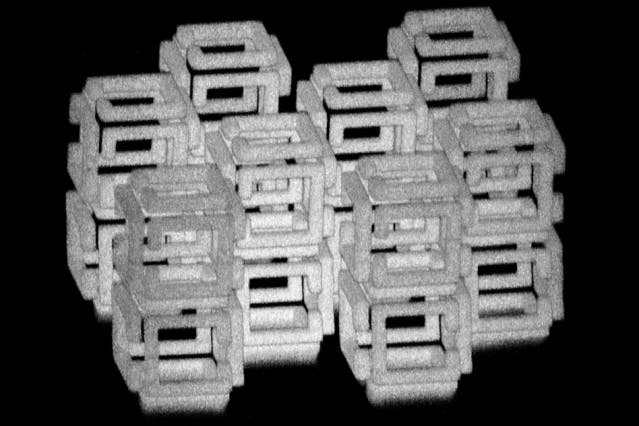Researchers at MIT have figured a way to create nanoscale structures by shrinking down existing objects by up to 1,000 times their original volume.

Producing nanoscale objects smaller than the width of the human hair can be very tricky. Existing technique involve etching patterns with lasers, for instance, but most only work for 2-D surfaces or are very slow and prone to errors when it comes to stacking 3-D objects. There are so challenging limitations as to what materials you can use.
The research team led by MIT professor Edward Boyden found a creative solution. Instead of painstakingly raising a new structure from scratch, the researchers took existing structures and shrunk them down to the desired size.
The technique is based on a process for imaging brain tissue called expansion microscopy. Used by thousands of researchers in biology labs around the world, expansion microscopy involves embedding tissue into a hydrogel and then expanding it. This then enables a high-resolution imaging with a regular microscope. When the process is run in reverse, something which scientists call “implosion fabrication”, relatively large objects can be scaled down to one-thousandth their original size.
First, the process starts with creating a scaffold out of polyacrylate. Then, the scaffold is soaked into a solution that contains certain molecules that attach to the frame when activated by a laser’s light. The fluorescein molecules can be coaxed to attach to certain points of the structure with a high degree of precision.
“It’s a bit like film photography,” co-author Daniel Oran, an MIT graduate student, said in a statement. “A latent image is formed by exposing a sensitive material in a gel to light. Then, you can develop that latent image into a real image by attaching another material, silver, afterwards. In this way implosion fabrication can create all sorts of structures, including gradients, unconnected structures, and multi-material patterns.”
Finally, the object is bathed in an acid, which blocks the negative charges in the polyacrylate, causing the whole structure to shrink.
The biggest limitation of this kind of approach is the inherent trade-off between size and resolution. For instance, an object that’s 1 cubic millimeter can have a resolution of 50 nanometers, whereas a 1 cubic centimeter object has a 500-nanometer resolution.
But even so, the technique’s potential applications are numerous, from optics to medicine to robotics.
“There are all kinds of things you can do with this,” said Edward Boyden, an associate professor of biological engineering and of brain and cognitive sciences at MIT. “Democratizing nanofabrication could open up frontiers we can’t yet imagine.”
“With a laser you can already find in many biology labs, you can scan a pattern, then deposit metals, semiconductors, or DNA, and then shrink it down,” Boyden added.
The findings were described in the journal Science.






